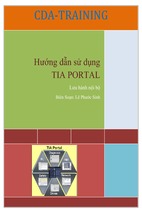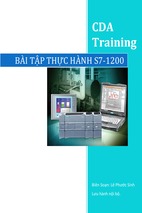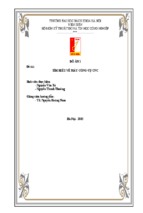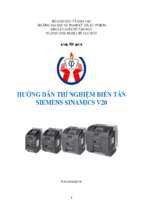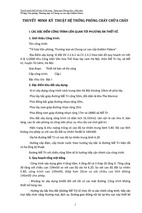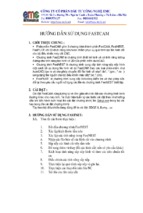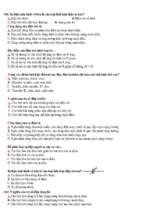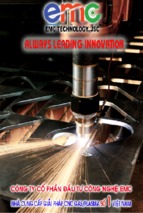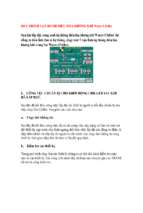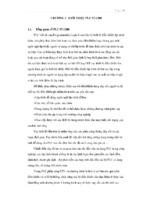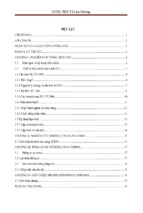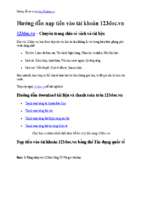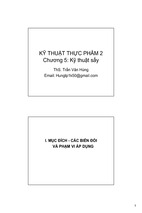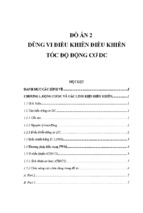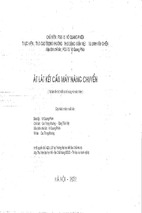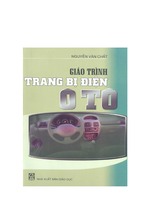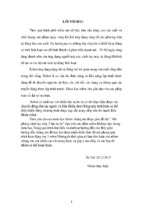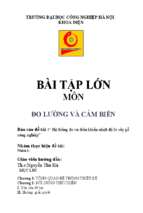HONEYWELL
ENGINEERING MANUAL of
AUTOMATIC
CONTROL for
COMMERCIAL BUILDINGS
ENGINEERING MANUAL OF AUTOMATIC CONTROL
i
Copyright 1934, 1940, 1953, 1988, 1991 and 1997 by Honeywell Inc.
All rights reserved. This manual or portions thereof may not be reporduced
in any form without permission of Honeywell Inc.
Library of Congress Catalog Card Number: 97-72971
Home and Building Control
Honeywell Inc.
Honeywell Plaza
P.O. Box 524
Minneapolis MN 55408-0524
Home and Building Control
Honeywell Limited-Honeywell Limitée
155 Gordon Baker Road
North York, Ontario
M2H 3N7
Honeywell Latin American Region
480 Sawgrass Corporate Parkway
Suite 200
Sunrise FL 33325
Honeywell Europe S.A.
3 Avenue du Bourget
1140 Brussels
Belgium
Honeywell Asia Pacific Inc.
Room 3213-3225
Sun Hung Kai Centre
No. 30 Harbour Road
Wanchai
Hong Kong
Printed in USA
ii
ENGINEERING MANUAL OF AUTOMATIC CONTROL
FOREWORD
The Minneapolis Honeywell Regulator Company published the first edition of the Engineering Manual of
Automatic Control in l934. The manual quickly became the standard textbook for the commercial building
controls industry. Subsequent editions have enjoyed even greater success in colleges, universities, and contractor
and consulting engineering offices throughout the world.
Since the original 1934 edition, the building control industry has experienced dramatic change and made
tremendous advances in equipment, system design, and application. In this edition, microprocessor controls are
shown in most of the control applications rather than pneumatic, electric, or electronic to reflect the trends in
industry today. Consideration of configuration, functionality, and integration plays a significant role in the
design of building control systems.
Through the years Honeywell has been dedicated to assisting consulting engineers and architects in the
application of automatic controls to heating, ventilating, and air conditioning systems. This manual is an outgrowth
of that dedication. Our end user customers, the building owners and operators, will ultimately benefit from the
efficiently designed systems resulting from the contents of this manual.
All of this manual’s original sections have been updated and enhanced to include the latest developments in
control technology. A new section has been added on indoor air quality and information on district heating has
been added to the Chiller, Boiler, and Distribution System Control Applications Section.
This twenty-first edition of the Engineering Manual of Automatic Control is our contribution to ensure that
we continue to satisfy our customer’s requirements. The contributions and encouragement received from previous
users are gratefully acknowledged. Further suggestions will be most welcome.
Minneapolis, Minnesota
October, 1997
KEVIN GILLIGAN
President, H&BC Solutions and Services
ENGINEERING MANUAL OF AUTOMATIC CONTROL
iii
iv
ENGINEERING MANUAL OF AUTOMATIC CONTROL
PREFACE
The purpose of this manual is to provide the reader with a fundamental understanding of controls and how
they are applied to the many parts of heating, ventilating, and air conditioning systems in commercial buildings.
Many aspects of control are presented including air handling units, terminal units, chillers, boilers, building
airflow, water and steam distribution systems, smoke management, and indoor air quality. Control fundamentals,
theory, and types of controls provide background for application of controls to heating, ventilating, and air
conditioning systems. Discussions of pneumatic, electric, electronic, and digital controls illustrate that applications
may use one or more of several different control methods. Engineering data such as equipment sizing, use of
psychrometric charts, and conversion formulas supplement and support the control information. To enhance
understanding, definitions of terms are provided within individual sections. For maximum usability, each section
of this manual is available as a separate, self-contained document.
Building management systems have evolved into a major consideration for the control engineer when evaluating
a total heating, ventilating, and air conditioning system design. In response to this consideration, the basics of
building management systems configuration are presented.
The control recommendations in this manual are general in nature and are not the basis for any specific job or
installation. Control systems are furnished according to the plans and specifications prepared by the control
engineer. In many instances there is more than one control solution. Professional expertise and judgment are
required for the design of a control system. This manual is not a substitute for such expertise and judgment.
Always consult a licensed engineer for advice on designing control systems.
It is hoped that the scope of information in this manual will provide the readers with the tools to expand their
knowledge base and help develop sound approaches to automatic control.
ENGINEERING MANUAL OF AUTOMATIC CONTROL
v
vi
ENGINEERING MANUAL OF AUTOMATIC CONTROL
ENGINEERING MANUAL of
AUTOMATIC
CONTROL
CONTENTS
Foreward .............................................................................................................................................................
iii
Preface ................................................................................................................................................................
v
Control System Fundamentals ............................................................................................
1
Control Fundamentals .......................................................................................................................................
Introduction ..........................................................................................
Definitions ............................................................................................
HVAC System Characteristics .............................................................
Control System Characteristics ...........................................................
Control System Components ..............................................................
Characteristics And Attributes Of Control Methods .............................
3
5
5
8
15
30
35
Psychrometric Chart Fundamentals ................................................................................................................
Introduction ..........................................................................................
Definitions ............................................................................................
Description of the Psychrometric Chart ...............................................
The Abridged Psychrometric Chart .....................................................
Examples of Air Mixing Process ..........................................................
Air Conditioning Processes .................................................................
Humidifying Process ............................................................................
ASHRAE Psychrometric Chart ............................................................
37
38
38
39
40
42
43
44
53
Pneumatic Control Fundamentals ....................................................................................................................
Introduction ..........................................................................................
Definitions ............................................................................................
Abbreviations .......................................................................................
Symbols ...............................................................................................
Basic Pneumatic Control System ........................................................
Air Supply Equipment ..........................................................................
Thermostats ........................................................................................
Controllers ...........................................................................................
Sensor-Controller Systems .................................................................
Actuators and Final Control Elements .................................................
Relays and Switches ...........................................................................
Pneumatic Control Combinations ........................................................
Pneumatic Centeralization ..................................................................
Pneumatic Control System Example ...................................................
57
59
59
60
61
61
65
69
70
72
74
77
84
89
90
Electric Control Fundamentals .........................................................................................................................
Introduction ..........................................................................................
Definitions ............................................................................................
How Electric Control Circuits Classified ..............................................
Series 40 Control Circuits....................................................................
Series 80 Control Circuits....................................................................
Series 60 Two-Position Control Circuits ...............................................
Series 60 Floating Control Circuits ......................................................
Series 90 Control Circuits....................................................................
Motor Control Circuits ..........................................................................
95
97
97
99
100
102
103
106
107
114
ENGINEERING MANUAL OF AUTOMATIC CONTROL
vii
Electronic Control Fundamentals .....................................................................................................................
Introduction ..........................................................................................
Definitions ............................................................................................
Typical System ....................................................................................
Components ........................................................................................
Electtonic Controller Fundamentals ....................................................
Typical System Application ..................................................................
119
120
120
122
122
129
130
Microprocessor-Based/DDC Fundamentals ....................................................................................................
Introduction ..........................................................................................
Definitions ............................................................................................
Background .........................................................................................
Advantages .........................................................................................
Controller Configuration ......................................................................
Types of Controllers .............................................................................
Controller Software ..............................................................................
Controller Programming ......................................................................
Typical Applications .............................................................................
131
133
133
134
134
135
136
137
142
145
Indoor Air Quality Fundamentals .....................................................................................................................
Introduction ..........................................................................................
Definitions ............................................................................................
Abbreviations .......................................................................................
Indoor Air Quality Concerns ................................................................
Indoor Air Quality Control Applications ................................................
Bibliography .........................................................................................
149
151
151
153
154
164
170
Smoke Management Fundamentals .................................................................................................................
Introduction ..........................................................................................
Definitions ............................................................................................
Objectives ............................................................................................
Design Considerations ........................................................................
Design Principles ................................................................................
Control Applications ............................................................................
Acceptance Testing .............................................................................
Leakage Rated Dampers ....................................................................
Bibliography .........................................................................................
171
172
172
173
173
175
178
181
181
182
Building Management System Fundamentals .................................................................................................
Introduction ..........................................................................................
Definitions ............................................................................................
Background .........................................................................................
System Configurations ........................................................................
System Functions ................................................................................
Integration of Other Systems ...............................................................
183
184
184
185
186
189
197
viii
ENGINEERING MANUAL OF AUTOMATIC CONTROL
Control System Applications ............................................................................................... 199
Air Handling System Control Applications ......................................................................................................
Introduction ..........................................................................................
Abbreviations .......................................................................................
Requirements For Effective Control ....................................................
Applications-General ...........................................................................
Valve and Damper Selection ...............................................................
Symbols ...............................................................................................
Ventilation Control Processes .............................................................
Fixed Quantity of Outdoor Air Control .................................................
Heating Control Processes ..................................................................
Preheat Control Processes .................................................................
Humidification Control Process ...........................................................
Cooling Control Processes ..................................................................
Dehumidification Control Processes ...................................................
Heating System Control process .........................................................
Year-Round System Control processes ..............................................
ASHRAE Psychrometric Charts ..........................................................
201
203
203
204
206
207
208
209
211
223
228
235
236
243
246
248
261
Building Airflow System Control Applications ...............................................................................................
Introduction ..........................................................................................
Definitions ............................................................................................
Airflow Control Fundamentals .............................................................
Airflow Control Applications .................................................................
References ..........................................................................................
263
265
265
267
281
292
Chiller, Boiler, and Distribution System Control Applications .......................................................................
Introduction ..........................................................................................
Abbreviations .......................................................................................
Definitions ............................................................................................
Symbols ...............................................................................................
Chiller System Control .........................................................................
Boiler System Control ..........................................................................
Hot And Chilled Water Distribution Systems Control ...........................
High Temperature Water Heating System Control ..............................
District Heating Applications ................................................................
293
297
297
297
298
299
329
337
376
382
Individual Room Control Applications ............................................................................................................
Introduction ..........................................................................................
Unitary Equipment Control ..................................................................
Hot Water Plant Considerations ..........................................................
399
401
412
428
ENGINEERING MANUAL OF AUTOMATIC CONTROL
ix
Engineering Information ....................................................................................................... 429
Valve Selection and Sizing ................................................................................................................................
Introduction ..........................................................................................
Definitions ............................................................................................
Valve Selection ....................................................................................
Valve Sizing .........................................................................................
431
432
432
436
441
Damper Selection and Sizing ............................................................................................................................
Introduction ..........................................................................................
Definitions ............................................................................................
Damper Selection ................................................................................
Damper Sizing .....................................................................................
Damper Pressure Drop .......................................................................
Damper Applications ...........................................................................
451
453
453
454
463
468
469
General Engineering Data .................................................................................................................................
Introduction ..........................................................................................
Weather Data ......................................................................................
Conversion Formulas And Tables ........................................................
Electrical Data .....................................................................................
Properties Of Saturated Steam Data ...................................................
Airflow Data .........................................................................................
Moisture Content Of Air Data ..............................................................
471
472
472
475
482
488
489
491
Index ....................................................................................................................................... 494
x
ENGINEERING MANUAL OF AUTOMATIC CONTROL
CONTROL FUNDAMENTALS
CONTROL
SYSTEMS
FUNDMENTALS
1
ENGINEERING MANUAL OF AUTOMATIC CONTROL
Control
Fundamentals
Contents
Introduction
............................................................................................................
5
Definitions
............................................................................................................
5
HVAC System Characteristics
............................................................................................................
General ................................................................................................
Heating ................................................................................................
General ................................................................................................
Heating Equipment ..............................................................................
Cooling ................................................................................................
General ................................................................................................
Cooling Equipment ..............................................................................
Dehumidification ..................................................................................
Humidification ......................................................................................
Ventilation ............................................................................................
Filtration ...............................................................................................
8
8
9
9
10
11
11
12
12
13
13
14
Control System Characteristics
............................................................................................................
Controlled Variables ............................................................................
Control Loop ........................................................................................
Control Methods ..................................................................................
General ...........................................................................................
Analog And Digital Control ..............................................................
Control Modes .....................................................................................
Two-Position Control .......................................................................
General .......................................................................................
Basic Two-Position Control .........................................................
Timed Two-Position Control ........................................................
Step Control ....................................................................................
Floating Control ...............................................................................
Proportional Control ........................................................................
General .......................................................................................
Compensation Control ................................................................
Proportional-Integral (Pi) Control ....................................................
Proportional-Integral-Derivative (Pid) Control .................................
Enhanced Proportional-Integral-Derivative (epid) Control ..............
Adaptive Control .............................................................................
Process Characteristics .......................................................................
15
15
15
16
16
16
17
17
17
17
18
19
20
21
21
22
23
25
25
26
26
CONTROL FUNDAMENTALS
Load ................................................................................................
Lag ..................................................................................................
General ...........................................................................................
Measurement Lag ...........................................................................
Capacitance ....................................................................................
Resistance ......................................................................................
Dead Time .......................................................................................
Control Application Guidelines ............................................................
26
27
27
27
28
29
29
29
............................................................................................................
Sensing Elements ...............................................................................
Temperature Sensing Elements ......................................................
Pressure Sensing Elements ............................................................
Moisture Sensing Elements ............................................................
Flow Sensors ..................................................................................
Proof-Of-Operation Sensors ...........................................................
Transducers ........................................................................................
Controllers ...........................................................................................
Actuators .............................................................................................
Auxiliary Equipment .............................................................................
30
30
30
31
32
32
33
33
33
33
34
Characteristics And Attributes Of Control Methods ..............................................................................................
35
Control System Components
ENGINEERING MANUAL OF AUTOMATIC CONTROL
4
CONTROL FUNDAMENTALS
INTRODUCTION
Automatic controls can optimize HVAC system operation.
They can adjust temperatures and pressures automatically to
reduce demand when spaces are unoccupied and regulate
heating and cooling to provide comfort conditions while
limiting energy usage. Limit controls ensure safe operation of
HVAC system equipment and prevent injury to personnel and
damage to the system. Examples of limit controls are lowlimit temperature controllers which help prevent water coils
or heat exchangers from freezing and flow sensors for safe
operation of some equipment (e.g., chillers). In the event of a
fire, controlled air distribution can provide smoke-free
evacuation passages, and smoke detection in ducts can close
dampers to prevent the spread of smoke and toxic gases.
This section describes heating, ventilating, and air
conditioning (HVAC) systems and discusses characteristics and
components of automatic control systems. Cross-references
are made to sections that provide more detailed information.
A correctly designed HVAC control system can provide a
comfortable environment for occupants, optimize energy cost
and consumption, improve employee productivity, facilitate
efficient manufacturing, control smoke in the event of a fire,
and support the operation of computer and telecommunications
equipment. Controls are essential to the proper operation of
the system and should be considered as early in the design
process as possible.
HVAC control systems can also be integrated with security
access control systems, fire alarm systems, lighting control
systems, and building and facility management systems to
further optimize building comfort, safety, and efficiency.
Properly applied automatic controls ensure that a correctly
designed HVAC system will maintain a comfortable
environment and perform economically under a wide range of
operating conditions. Automatic controls regulate HVAC
system output in response to varying indoor and outdoor
conditions to maintain general comfort conditions in office
areas and provide narrow temperature and humidity limits
where required in production areas for product quality.
DEFINITIONS
The following terms are used in this manual. Figure 1 at the
end of this list illustrates a typical control loop with the
components identified using terms from this list.
Controlled medium: The medium in which the controlled
variable exists. In a space temperature control system,
the controlled variable is the space temperature and
the controlled medium is the air within the space.
Analog: Continuously variable (e.g., a faucet controlling water
from off to full flow).
Controlled Variable: The quantity or condition that is
measured and controlled.
Automatic control system: A system that reacts to a change
or imbalance in the variable it controls by adjusting
other variables to restore the system to the desired
balance.
Controller: A device that senses changes in the controlled
variable (or receives input from a remote sensor) and
derives the proper correction output.
Algorithm: A calculation method that produces a control
output by operating on an error signal or a time series
of error signals.
Corrective action: Control action that results in a change of
the manipulated variable. Initiated when the
controlled variable deviates from setpoint.
Compensation control: A process of automatically adjusting
the setpoint of a given controller to compensate for
changes in a second measured variable (e.g., outdoor
air temperature). For example, the hot deck setpoint
is normally reset upward as the outdoor air
temperature decreases. Also called “reset control”.
Cycle: One complete execution of a repeatable process. In
basic heating operation, a cycle comprises one on
period and one off period in a two-position control
system.
Cycling: A periodic change in the controlled variable from
one value to another. Out-of-control analog cycling
is called “hunting”. Too frequent on-off cycling is
called “short cycling”. Short cycling can harm electric
motors, fans, and compressors.
Control agent: The medium in which the manipulated variable
exists. In a steam heating system, the control agent is
the steam and the manipulated variable is the flow of
the steam.
Cycling rate: The number of cycles completed per time unit,
typically cycles per hour for a heating or cooling
system. The inverse of the length of the period of the
cycle.
Control point: The actual value of the controlled variable
(setpoint plus or minus offset).
5
ENGINEERING MANUAL OF AUTOMATIC CONTROL
CONTROL FUNDAMENTALS
Deadband: A range of the controlled variable in which no
corrective action is taken by the controlled system
and no energy is used. See also “zero energy band”.
related. Also, the delay in response of the sensing
element of a control due to the time required for the
sensing element to sense a change in the sensed
variable.
Deviation: The difference between the setpoint and the value
of the controlled variable at any moment. Also called
“offset”.
Load: In a heating or cooling system, the heat transfer that
the system will be called upon to provide. Also, the
work that the system must perform.
DDC: Direct Digital Control. See also Digital and Digital
control.
Manipulated variable: The quantity or condition regulated
by the automatic control system to cause the desired
change in the controlled variable.
Digital: A series of on and off pulses arranged to convey
information. Morse code is an early example.
Processors (computers) operate using digital
language.
Measured variable: A variable that is measured and may be
controlled (e.g., discharge air is measured and
controlled, outdoor air is only measured).
Microprocessor-based control: A control circuit that operates
on low voltage and uses a microprocessor to perform
logic and control functions, such as operating a relay
or providing an output signal to position an actuator.
Electronic devices are primarily used as sensors. The
controller often furnishes flexible DDC and energy
management control routines.
Digital control: A control loop in which a microprocessorbased controller directly controls equipment based
on sensor inputs and setpoint parameters. The
programmed control sequence determines the output
to the equipment.
Droop: A sustained deviation between the control point and
the setpoint in a two-position control system caused
by a change in the heating or cooling load.
Modulating: An action that adjusts by minute increments and
decrements.
Enhanced proportional-integral-derivative (EPID) control:
A control algorithm that enhances the standard PID
algorithm by allowing the designer to enter a startup
output value and error ramp duration in addition to
the gains and setpoints. These additional parameters
are configured so that at startup the PID output varies
smoothly to the control point with negligible
overshoot or undershoot.
Offset: A sustained deviation between the control point and
the setpoint of a proportional control system under
stable operating conditions.
On/off control: A simple two-position control system in which
the device being controlled is either full on or full off
with no intermediate operating positions available.
Also called “two-position control”.
Electric control: A control circuit that operates on line or low
voltage and uses a mechanical means, such as a
temperature-sensitive bimetal or bellows, to perform
control functions, such as actuating a switch or
positioning a potentiometer. The controller signal
usually operates or positions an electric actuator or
may switch an electrical load directly or through a
relay.
Pneumatic control: A control circuit that operates on air
pressure and uses a mechanical means, such as a
temperature-sensitive bimetal or bellows, to perform
control functions, such as actuating a nozzle and
flapper or a switching relay. The controller output
usually operates or positions a pneumatic actuator,
although relays and switches are often in the circuit.
Process: A general term that describes a change in a measurable
variable (e.g., the mixing of return and outdoor air
streams in a mixed-air control loop and heat transfer
between cold water and hot air in a cooling coil).
Usually considered separately from the sensing
element, control element, and controller.
Electronic control: A control circuit that operates on low
voltage and uses solid-state components to amplify
input signals and perform control functions, such as
operating a relay or providing an output signal to
position an actuator. The controller usually furnishes
fixed control routines based on the logic of the solidstate components.
Proportional band: In a proportional controller, the control
point range through which the controlled variable
must pass to move the final control element through
its full operating range. Expressed in percent of
primary sensor span. Commonly used equivalents are
“throttling range” and “modulating range”, usually
expressed in a quantity of engineering units (degrees
of temperature).
Final control element: A device such as a valve or damper
that acts to change the value of the manipulated
variable. Positioned by an actuator.
Hunting: See Cycling.
Lag: A delay in the effect of a changed condition at one point
in the system, or some other condition to which it is
ENGINEERING MANUAL OF AUTOMATIC CONTROL
6
CONTROL FUNDAMENTALS
Step control: Control method in which a multiple-switch
assembly sequentially switches equipment (e.g.,
electric heat, multiple chillers) as the controller input
varies through the proportional band. Step controllers
may be actuator driven, electronic, or directly
activated by the sensed medium (e.g., pressure,
temperature).
Proportional control: A control algorithm or method in which
the final control element moves to a position
proportional to the deviation of the value of the
controlled variable from the setpoint.
Proportional-Integral (PI) control: A control algorithm that
combines the proportional (proportional response)
and integral (reset response) control algorithms. Reset
response tends to correct the offset resulting from
proportional control. Also called “proportional-plusreset” or “two-mode” control.
Throttling range: In a proportional controller, the control point
range through which the controlled variable must pass
to move the final control element through its full
operating range. Expressed in values of the controlled
variable (e.g., degrees Fahrenheit, percent relative
humidity, pounds per square inch). Also called
“proportional band”. In a proportional room
thermostat, the temperature change required to drive
the manipulated variable from full off to full on.
Proportional-Integral-Derivative (PID) control: A control
algorithm that enhances the PI control algorithm by
adding a component that is proportional to the rate of
change (derivative) of the deviation of the controlled
variable. Compensates for system dynamics and
allows faster control response. Also called “threemode” or “rate-reset” control.
Time constant: The time required for a dynamic component,
such as a sensor, or a control system to reach 63.2
percent of the total response to an instantaneous (or
“step”) change to its input. Typically used to judge
the responsiveness of the component or system.
Reset Control: See Compensation control.
Sensing element: A device or component that measures the
value of a variable.
Two-position control: See on/off control.
Zero energy band: An energy conservation technique that
allows temperatures to float between selected settings,
thereby preventing the consumption of heating or
cooling energy while the temperature is in this range.
Setpoint: The value at which the controller is set (e.g., the
desired room temperature set on a thermostat). The
desired control point.
Short cycling: See Cycling.
Zoning: The practice of dividing a building into sections for
heating and cooling control so that one controller is
sufficient to determine the heating and cooling
MEASURED
VARIABLE
ALGORITHM IN
CONTROLLER
RESET SCHEDULE
OUTDOOR
AIR
60
130
SETPOINT
30
160
0
OUTDOOR
AIR
190
OA
TEMPERATURE
CONTROLLED
VARIABLE
MEASURED
VARIABLE
INPUT
OUTPUT
PERCENT
OPEN
CONTROL
POINT
41
VALVE
HOT WATER
SUPPLY
TEMPERATURE
CONTROLLED
MEDIUM
SETPOINT
HW
SETPOINT
159
FINAL CONTROL
ELEMENT
STEAM
CONTROL
AGENT
FLOW
HOT WATER
SUPPLY
MANIPULATED
VARIABLE
148
HOT WATER
RETURN
AUTO
M10510
requirements for the section.
Fig. 1. Typical Control Loop.
7
ENGINEERING MANUAL OF AUTOMATIC CONTROL
CONTROL FUNDAMENTALS
HVAC SYSTEM CHARACTERISTICS
Figure 2 shows how an HVAC system may be distributed in
a small commercial building. The system control panel, boilers,
motors, pumps, and chillers are often located on the lower level.
The cooling tower is typically located on the roof. Throughout
the building are ductwork, fans, dampers, coils, air filters,
heating units, and variable air volume (VAV) units and
diffusers. Larger buildings often have separate systems for
groups of floors or areas of the building.
GENERAL
An HVAC system is designed according to capacity
requirements, an acceptable combination of first cost and
operating costs, system reliability, and available equipment
space.
DUCTWORK
COOLING
TOWER
DAMPER
AIR
FILTER
COOLING
COIL
HEATING
UNIT
VAV BOX
DIFFUSER
FAN
CHILLER
BOILER
PUMP
CONTROL
PANEL
M10506
Fig. 2. Typical HVAC System in a Small Building.
The control system for a commercial building comprises
many control loops and can be divided into central system and
local- or zone-control loops. For maximum comfort and
efficiency, all control loops should be tied together to share
information and system commands using a building
management system. Refer to the Building Management
System Fundamentals section of this manual.
ENGINEERING MANUAL OF AUTOMATIC CONTROL
The basic control loops in a central air handling system can
be classified as shown in Table 1.
Depending on the system, other controls may be required
for optimum performance. Local or zone controls depend on
the type of terminal units used.
8
CONTROL FUNDAMENTALS
Table 1. Functions of Central HVAC Control Loops.
Control
Loop
Classification
Ventilation
Description
Basic
Better
Controls cooling tower fans to provide the coolest water practical under existing
wet bulb temperature conditions.
Water coil control
Adjusts chilled water flow to maintain temperature.
Direct expansion
(DX) system
control
Cycles compressor or DX coil solenoid valves to maintain temperature. If
compressor is unloading type, cylinders are unloaded as required to maintain
temperature.
Basic
Turns on supply and return fans during occupied periods and cycles them as
required during unoccupied periods.
Better
Adjusts fan volumes to maintain proper duct and space pressures. Reduces system
operating cost and improves performance (essential for variable air volume
systems).
Coil control
Adjusts water or steam flow or electric heat to maintain temperature.
Boiler control
Heating
Maintains chiller discharge water at preset temperature or resets temperature
according to demand.
Cooling tower
control
Fan
Measures and controls the volume of outdoor air to provide the proper mix of
outdoor and return air under varying indoor conditions (essential in variable air
volume systems). Low-temperature protection may be required.
Chiller control
Cooling
Coordinates operation of the outdoor, return, and exhaust air dampers to maintain
the proper amount of ventilation air. Low-temperature protection is often required.
Operates burner to maintain proper discharge steam pressure or water temperature.
For maximum efficiency in a hot water system, water temperature should be reset
as a function of demand or outdoor temperature.
HEATING
GENERAL
Building heat loss occurs mainly through transmission,
infiltration/exfiltration, and ventilation (Fig. 3).
TRANSMISSION
VENTILATION
ROOF
Transmission is the process by which energy enters or leaves
a space through exterior surfaces. The rate of energy
transmission is calculated by subtracting the outdoor
temperature from the indoor temperature and multiplying the
result by the heat transfer coefficient of the surface materials.
The rate of transmission varies with the thickness and
construction of the exterior surfaces but is calculated the same
way for all exterior surfaces:
20°F
PREVAILING
WINDS
DUCT
70°F
EXFILTRATION
DOOR
WINDOW
Energy Transmission per
Unit Area and Unit Time =
INFILTRATION
C2701
(T - T ) x HTC
IN
OUT
Where:
Fig. 3. Heat Loss from a Building.
T = indoor temperature
T
= outdoor temperature
HTC = heat transfer coefficient
IN
The heating capacity required for a building depends on the
design temperature, the quantity of outdoor air used, and the
physical activity of the occupants. Prevailing winds affect the
rate of heat loss and the degree of infiltration. The heating
system must be sized to heat the building at the coldest outdoor
temperature the building is likely to experience (outdoor design
temperature).
OUT
HTC
9
=
Btu
Unit Time x Unit Area x Unit Temperatur
ENGINEERING MANUAL OF AUTOMATIC CONTROL
CONTROL FUNDAMENTALS
Infiltration is the process by which outdoor air enters a
building through walls, cracks around doors and windows, and
open doors due to the difference between indoor and outdoor
air pressures. The pressure differential is the result of
temperature difference and air intake or exhaust caused by fan
operation. Heat loss due to infiltration is a function of
temperature difference and volume of air moved. Exfiltration
is the process by which air leaves a building (e.g., through
walls and cracks around doors and windows) and carries heat
with it. Infiltration and exfiltration can occur at the same time.
STEAM OR
HOT WATER
SUPPLY
FAN
COIL
CONDENSATE
OR HOT WATER
RETURN
UNIT HEATER
STEAM TRAP
(IF STEAM SUPPLY)
C2703
Ventilation brings in fresh outdoor air that may require
heating. As with heat loss from infiltration and exfiltration,
heat loss from ventilation is a function of the temperature
difference and the volume of air brought into the building or
exhausted.
Fig. 5. Typical Unit Heater.
HOT WATER
SUPPLY
HEATING EQUIPMENT
HOT WATER
RETURN
Selecting the proper heating equipment depends on many
factors, including cost and availability of fuels, building size
and use, climate, and initial and operating cost trade-offs.
Primary sources of heat include gas, oil, wood, coal, electrical,
and solar energy. Sometimes a combination of sources is most
economical. Boilers are typically fueled by gas and may have
the option of switching to oil during periods of high demand.
Solar heat can be used as an alternate or supplementary source
with any type of fuel.
GRID PANEL
HOT WATER
SUPPLY
HOT WATER
RETURN
SERPENTINE PANEL
C2704
Figure 4 shows an air handling system with a hot water coil.
A similar control scheme would apply to a steam coil. If steam
or hot water is chosen to distribute the heat energy, highefficiency boilers may be used to reduce life-cycle cost. Water
generally is used more often than steam to transmit heat energy
from the boiler to the coils or terminal units, because water
requires fewer safety measures and is typically more efficient,
especially in mild climates.
Fig. 6. Panel Heaters.
Unit ventilators (Fig. 7) are used in classrooms and may
include both a heating and a cooling coil. Convection heaters
(Fig. 8) are used for perimeter heating and in entries and
corridors. Infrared heaters (Fig. 9) are typically used for spot
heating in large areas (e.g., aircraft hangers, stadiums).
DISCHARGE
AIR
WALL
THERMOSTAT
VALVE
HOT WATER
SUPPLY
FAN
HEATING
COIL
DISCHARGE
AIR
FAN
HOT WATER
RETURN
COOLING
COIL
C2702
Fig. 4. System Using Heating Coil.
DRAIN PAN
An air handling system provides heat by moving an air
stream across a coil containing a heating medium, across an
electric heating coil, or through a furnace. Unit heaters (Fig.
5) are typically used in shops, storage areas, stairwells, and
docks. Panel heaters (Fig. 6) are typically used for heating
floors and are usually installed in a slab or floor structure, but
may be installed in a wall or ceiling.
MIXING
DAMPERS
RETURN
AIR
OUTDOOR
AIR
C3035
Fig. 7. Unit Ventilator.
ENGINEERING MANUAL OF AUTOMATIC CONTROL
10
- Xem thêm -

